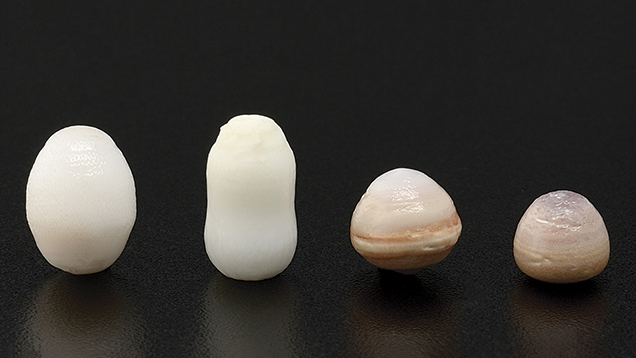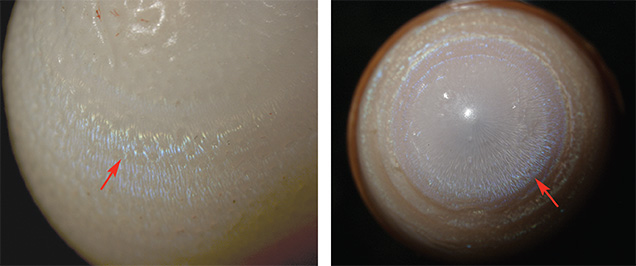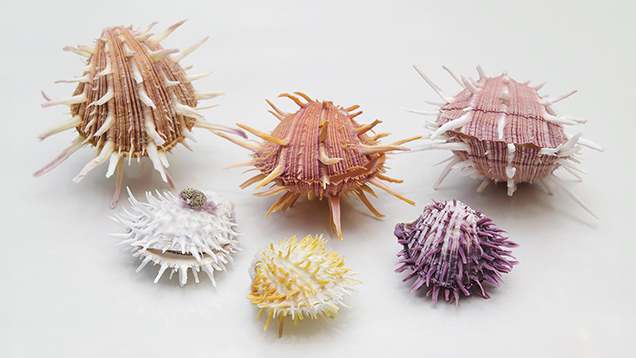Natural Pearls Reportedly from a Spondylus Species (“Thorny” Oyster)

Their bodycolors and shapes varied. Each exhibited some degree of pink and orange hues, and either elongated or button shapes. The porcelaneous surfaces also exhibited areas with clear flame structures. Under fiber-optic light, fine flame structures resembling those seen in other porcelaneous pearls such as Tridacna gigas and Strombus gigas (conch) pearls were observed. While the typical whitish flame structure was readily apparent, the more notable observation was that some of the flames had a distinct blue coloration (figure 2). Other types of pearls usually do not show blue flames. Microradiography was of little diagnostic assistance, as only tight structures were observed; this is not unusual for porcelaneous pearls. Raman spectroscopy detected both aragonite and calcite separately on different parts of the samples. In the authors’ experience, this differs from conch or clam pearls, which are usually composed of aragonite only.

Figure 2. The porcelaneous surface appearances of two of the pearls, weighing 12.40 ct (left, magnified 20×) and 8.22 ct (right, magnified 10×) show their characteristic blue flames, indicated by the arrows. Photos by Joyce WingYan Ho.
Due to their unique shapes, colors, surface, and flame structures, we suspected these pearls were from one of the many Spondylus species (figure 3), commonly called “thorny” or “spiny” oysters. Although rarely encountered in GIA laboratories, Spondylus pearls have been documented in the past (Winter 1987 Lab Notes, p. 235; E. Strack, Pearls, Ruhle-Diebener-Verlag GmbH & Co., Stuttgart, 2006, p. 255), and some samples have been collected by the Qatar Museums Authority (H. Bari and D. Lam, Pearls, Skira Editore S.p.A, 2009, pp. 88–89). Our client later informed us that these specimens were found by a fisherman in shells of Spondylus princeps off the coast of Baja California, Mexico.
Figure 3. These shells are from various Spondylus species. Courtesy of GIA’s Bangkok laboratory. Photo by Nuttapol Kitdee.
This was a rare opportunity to see natural pearls from a known Spondylus species, and to document their unique gemological characteristics as references for mollusk identification in the future. .jpg)


